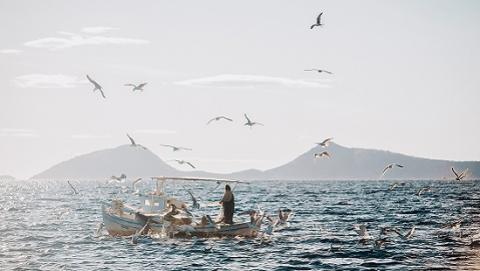
The oceans in the history of Earth, Life and Human societies
Hydrothermal vent models
Carbonate hydrothermal vents are among the largest structures in the oceans, and form a unique ecosystem - perhaps the closest to the primitive oceanic ecosystem. However, their formation mechanism is poorly understood, and the question of whether it is dominated by the hydrodynamics of reactive fluids that can precipitate or catalyzed by bacteria remains open. The idea of the internship, which is part of a collaboration between Sorbonne University and the Institut de Physique du Globe de Paris (IPGP), is to explore the hydrodynamic mechanisms of formation on the basis of model laboratory experiments aiming at reproducing synthetic chimneys via the injection of a fluid similar to the one contained in hydrothermal chambers in a seawater basin in order to analyze the kinetics of chimney formation, the associated flows as well as the structure of the edifice obtained.
Hosting structure: Institut Jean Le Rond ∂'Alembert / team " Fluides Complexes et Instabilités Hydrodynamiques " of Sorbonne University in cooperation with IPGP
Bioavailability of magnesium in seawater: impact on environmental reconstructions by bivalve shells
Geochemical markers (i.e. Mg/Ca) of biogenic carbonates still present uncertainties that hinder their use to correctly estimate physicochemical parameters of paleoenvironments. Bivalve shells are promising for these applications because of their rapid growth over several years, but previous studies have revealed that their geochemical composition differs for unknown reasons from one site to another under the same temperature conditions. This project will attempt to examine for the first time the impact of Mg bioavailability on the geochemical composition of the shells with a short and medium term rearing experiment in an experimental environment.
Hosting structure: ISTeP - Institute of Earth Sciences of Paris / AD2M - Adaptation and Diversity of the Marine Environment of Sorbonne University
Stable isotopes (C AND N) of ancient and present marine collagen as markers of fluctuations in marine food webs in the Mediterranean over the last three millennia.
The aim is to apply transdisciplinary analytical tools to archaeological series in order to answer central questions, in environmental archaeology as well as in historical ecology, on the fluctuations of marine resources in the Mediterranean over the last millennia. The study will be based on three archaeological assemblages of fish skeletons from three sites located in the Gulf of Thermaica in the Northern Aegean, from the Bronze Age to the Classical period, several Mediterranean taxa will be analyzed to obtain the isotopic contributions (15N and 13C) on which are based the MTL (Mean Trophic Level) global (bulk) values of collagen and specific (CSIA) values of collagen amino acids, the values obtained will be compared with each other over the three millennia covered by the archaeological samples as well as with the current values in the region.
Hosting structure: Laboratory of Oceanography of Villefranche-sur-Mer, Sorbonne University in cooperation with CEPAM, Cultures, Environment, Prehistory, Antiquity, Middle Ages of the University of Côte d'Azur.
